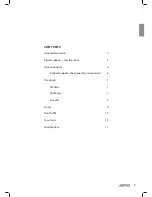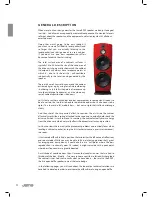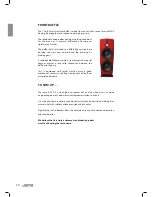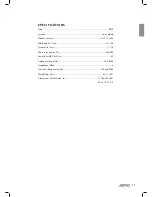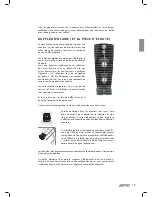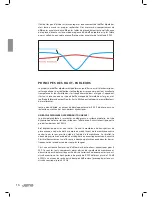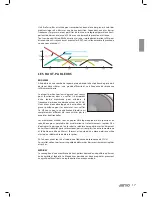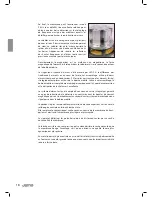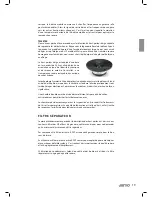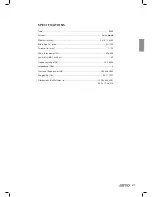
6
A velocity transducer/dipole speaker couples with a room in a totally different
way, and actually, where you would normally experience a ‘bass null’ with a cabinet
speaker, you will actually experience a slight peak with a dipolar.
While there has been little research into the pros and cons of dipolar speakers in
rooms Jamo has conducted extensive research of its own. Our measurements of
different speakers in different sized rooms show that with speakers this size, the
room’s infl uence on the resulting sound is substantially less when using dipolar
speakers than when using traditional cabinet speakers.
D R I V E R P R I N C I P L E S
Most dipolar speakers on the market today are either electrostatic or magnestatic in
nature, engineering arrangements that are known for their excellent transparency
and smooth fl owing midrange/treble reproduction. Equally, however, they are also
known for their inability to play deep bass with true authority, extremely poor
voltage sensitivity and - last but not least - for typically being very diffi cult loads for
an amplifi er to handle (because of their low impedance).
That’s why Jamo decided, quite early on in the development of the R 909, to opt for
an arrangement that used dynamic drivers.
A DIPOLAR SPEAKER THAT GENERATES SERIOUS BASS?
The major problem to overcome in dipolar designs, regardless of whether they are
designed to use dynamic or electrostatic principles, is the acoustic ‘short-circuiting’
effect which invariably occurs from approx 200Hz downwards.
For those unfamiliar with this bugbear here’s a brief explanation. When the bass
driver’s cone moves forward, part of the compressed air created in front of the cone,
will be counteracted by the under-pressure that’s created behind the cone. As a
consequence the resulting sound pressure level that’s generated is “phased out”
or acoustically short-circuited. And unfortunately it’s an effect that’s signifi cantly
more pronounced at lower frequencies.
That was another excellent justifi cation for using dynamic drivers in the R 909
- they are the only sort that are endowed with enough physical cone area/excursion
to move the amount of air you need to shift, in order to compensate for acoustic
short circuiting. The woofers in R 909 actually deliver more than 100dB at 200Hz, an
output that then rolls off at 6dB/oct (caused by the acoustic short circuiting...) all
the way down to 25Hz.
Summary of Contents for R 909
Page 1: ...TECHNICAL DESCRIPTION Jamo R 909 ...
Page 2: ...français deutsch english ...
Page 3: ...2 english ...
Page 13: ...français ...
Page 23: ...deutsch ...
Page 33: ...32 ...
Page 34: ...33 ݙ ᆍ ὖ䗄 ي ᵕᓣ ㆅ ᠓䯈 偅ࡼॳ ϔϾ ي ᵕᓣ ㆅг㛑ѻ 䞡Ԣ 偅ࡼऩ ܗ Ԣ Ё 催 ߚ乥 ࠡ䱰ᵓ ᘏ㒧Ă 㾘Ḑ ...
Page 42: ...www jamo com ...




